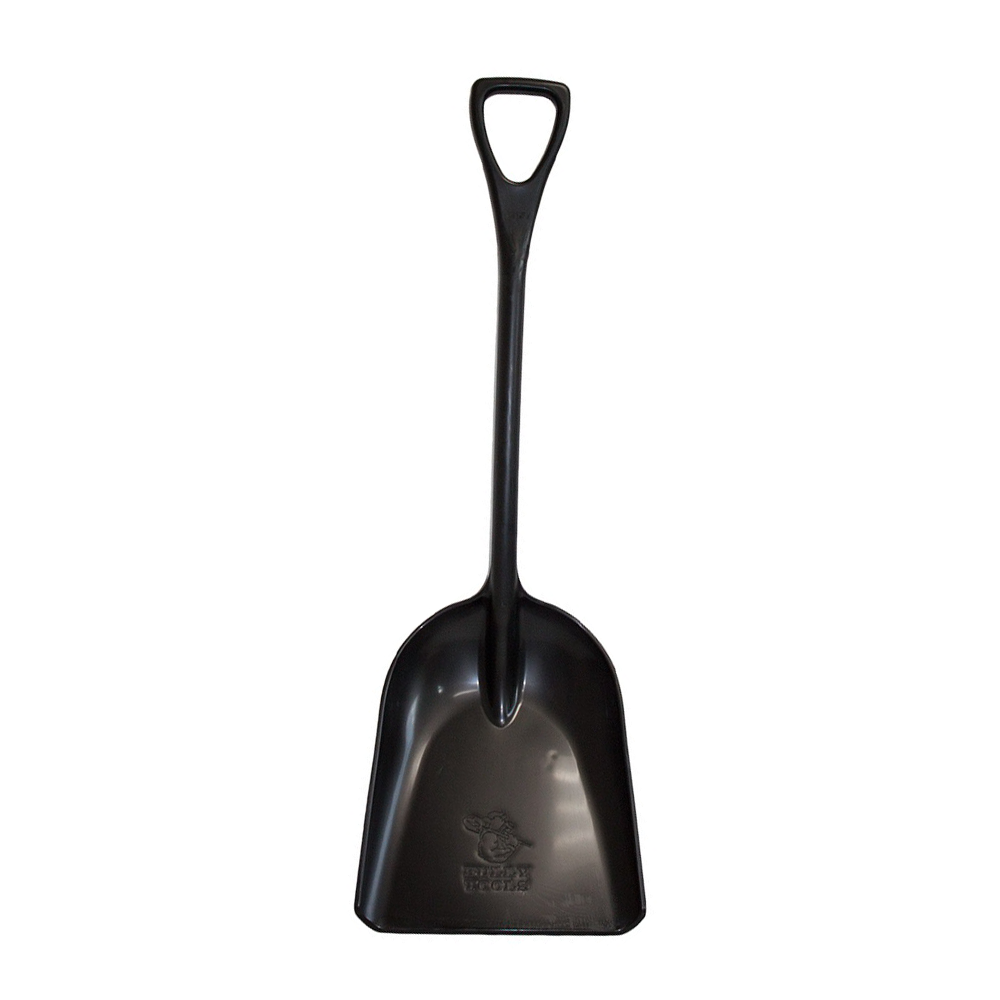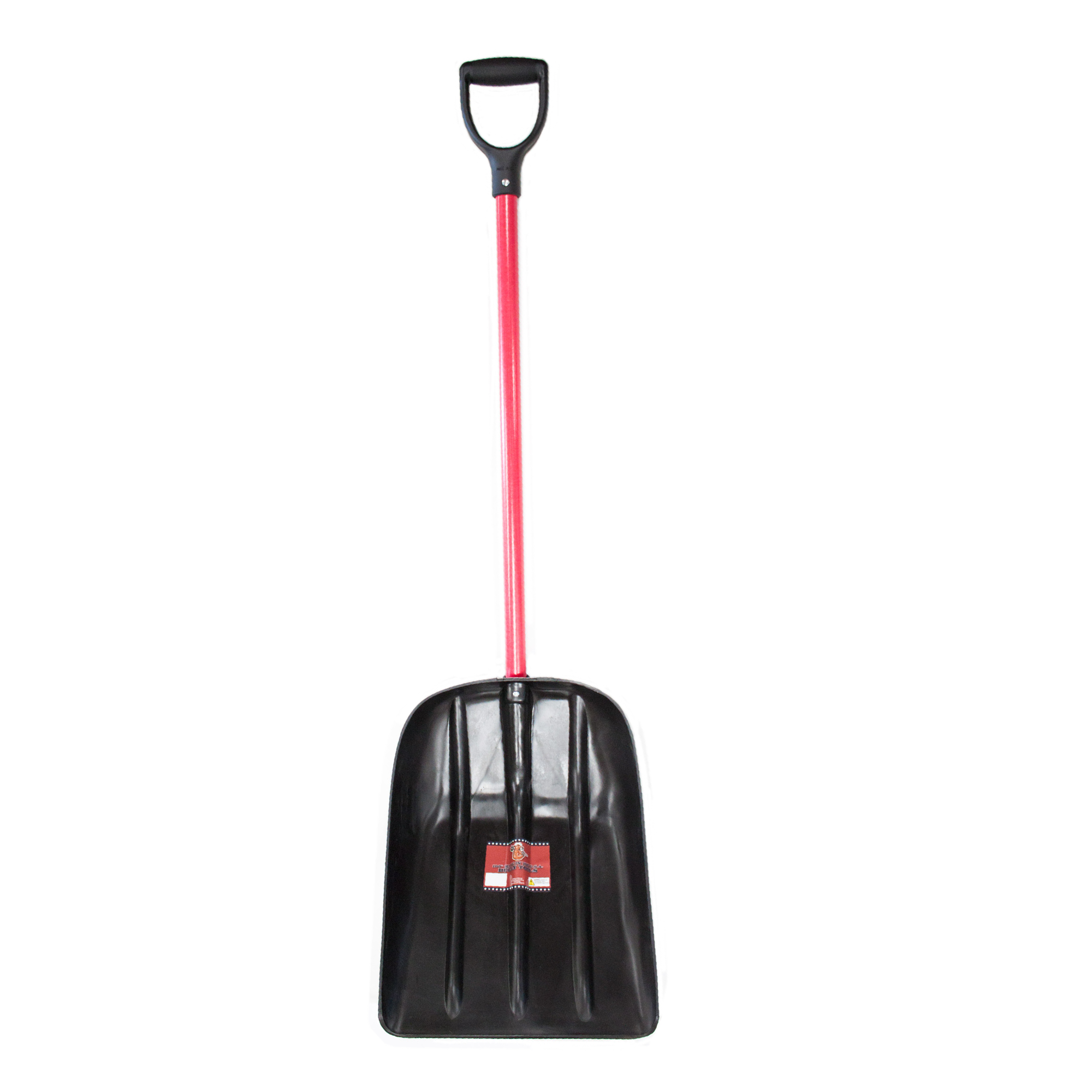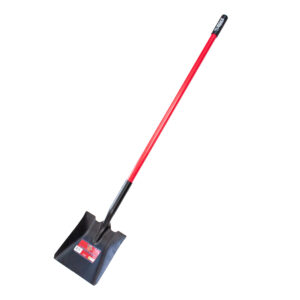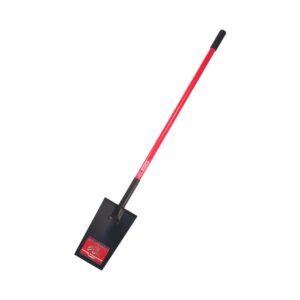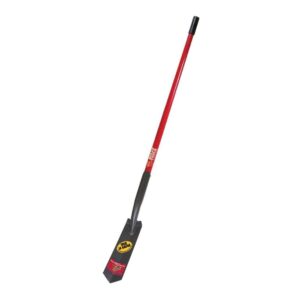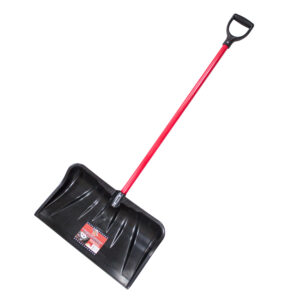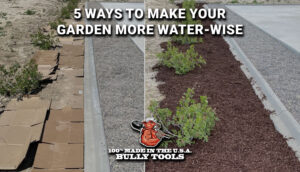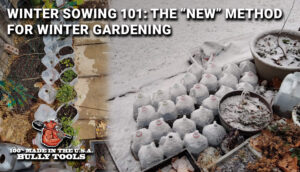How to Find the Right Shovel for Your Next Project
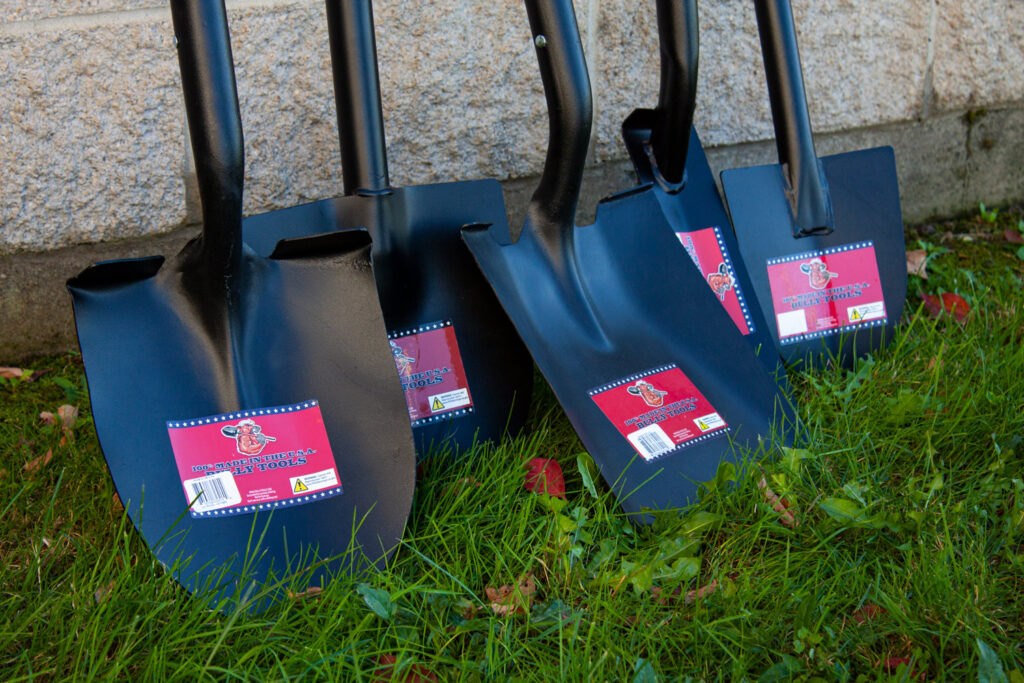
Are you looking to elevate your garden tool collection this year? We’re sure you have a shovel or two lying in your tool shed or garage, but unfortunately, shovels aren’t universal. There are a lot of different kinds of shovels that were designed with specific landscaping or home improvement goals in mind. We’re going to go over how the shovel came to be, some popular shovel designs, and how and when to use each of them.
And if you’re looking to replace your garden tools this year, we at 100% Made in the USA Bully Tools have got you covered! So let’s break down everything you need to know about the ground-breaking invention – the shovel.
HISTORY OF THE SHOVEL
As we’re sure you know, shovels have been around for thousands and thousands of years. The earliest humans would use the pelvic bones of large animals as scoops and eventually began to attach them to pieces of wood using deer ligaments. They used these tools just as we do – to dig, transport, and move around materials.
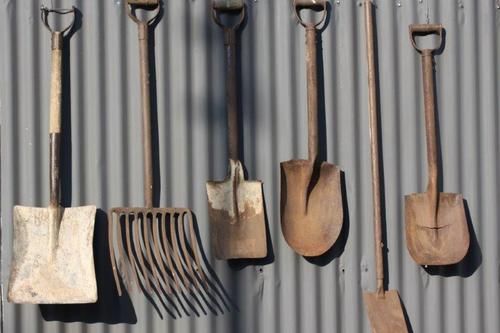
During the Iron Age in Europe, a time period between 1200 BC and 600 BC that saw a (literal) reinvention of technology, humans began to make tools from iron and steel. They found that steel was much harder than the previously used material – bronze, and production of steel and iron during this time increased rapidly.
Steel tools made their way to the Americas alongside European passengers seeking a life in “The New World”. Shovels became an essential piece of equipment in constructing roads, railways, and other infrastructure, just in time for the American Industrial Revolution in the 1800s.
During this period, an engineer and theorist named Frederick Winslow Taylor became the first person to propose creating shovels with different sized-scoops and specialized purposes for different projects. He was also able to use physics and kinetics to create best practices for shoveling, lifting, and moving material that are still used in the industry today.
Today – there are thousands of shovels on the market. The materials used to make the tool have certainly evolved over time, but the basic construction has always remained the same. But the question remains – if there are so many types of shovels now, how do I find the right one for my project? Keep reading, we’re here to help.
TYPES OF SHOVELS AND THEIR USES
Shovels serve all sorts of purposes in and around your home all year long. You use shovels on your lawn and in your garden, seasonally to manage snow, in your fireplace to collect ash, and – for contractors, landscapers, and handymen – everyday while working.
Shovels are constructed of a few basic parts. Starting with the most recognizable portion of the tool – the shovel blade, also known as the cutting edge, is the curved scoop portion of the tool that penetrates the ground. There are various styles of blades that serve different purposes and the best are:
- For general digging/landscaping – ROUND-POINT
- To transfer loose material – SQUARE-POINT
- To dig a trench or get in a tight spot – TRENCHING SHOVEL
- For clearing hard to reach spaces – DRAIN SPADE
- To edge – EDGING SHOVEL/EDGER
- To clear snow – SNOW SHOVEL/SNOW PUSHER
- To dig post holes – POST HOLE DIGGER
- For scooping mulch or snow – ONE-PIECE SCOOP/ SCOOP SHOVEL
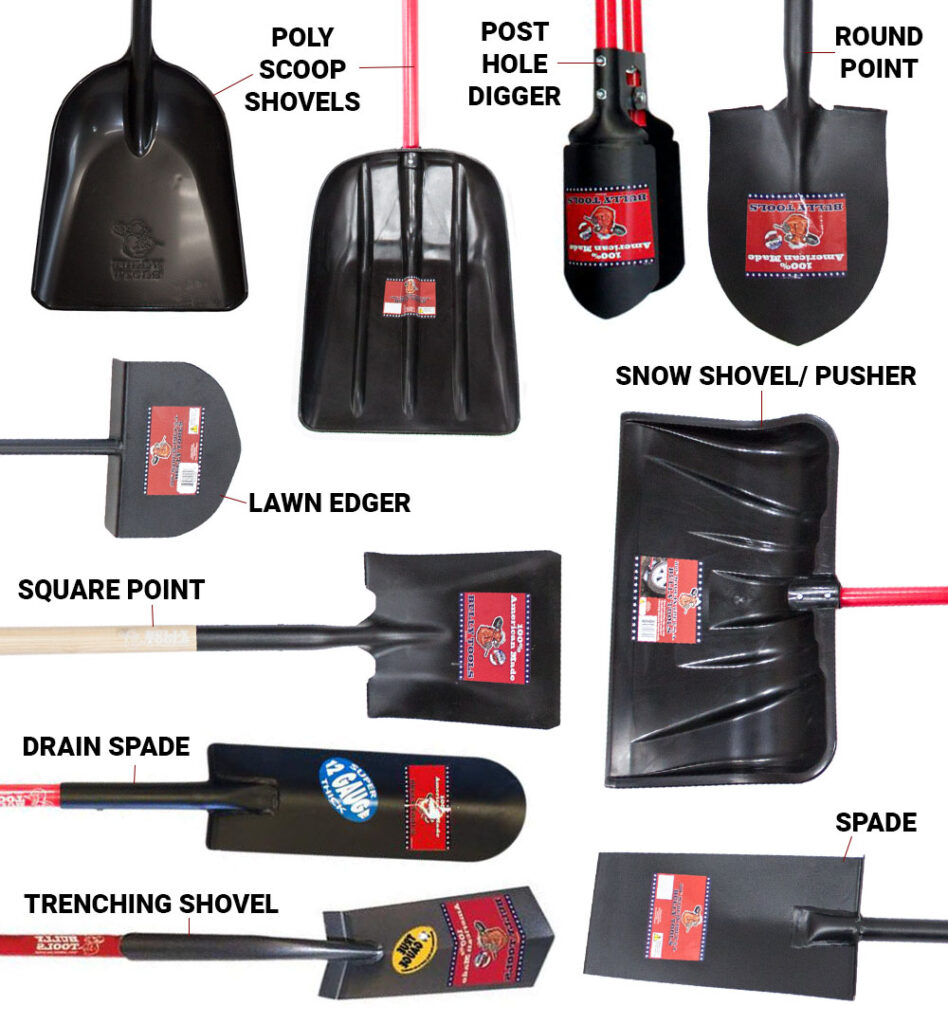
You can find the right shovel for the job by doing proper research before starting your lawn or garden project. Most heavy-duty projects require a shovel with a steel or hard plastic blade. Snow shovels – used to move heavy piles of snow, slush, and ice – have blades usually made of hard plastic. The shovel is, therefore, lighter by itself, making it easier to scoop and dump over long periods of time.
SHOVEL CONSTRUCTION
Aside from the blade, all of these types of shovels share similar construction otherwise. Where the blade meets the neck of the shovel, there are typically two footsteps that come out for structural support and allow you to use your body weight to break the ground easily.
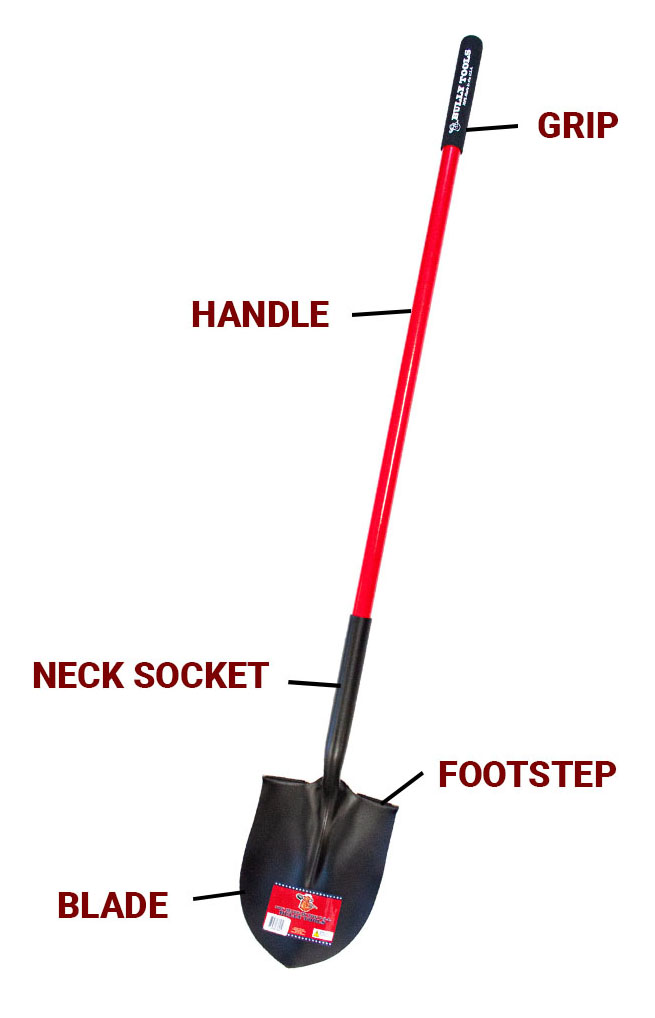
The (typically) steel encasing that goes about halfway up the handle of lawn and garden shovels is the socket or neck. This is there to reinforce the weakest part of the shovel – right where the blade and handle meet – and makes the shovel stronger so it can hold heavy loads of dirt, gravel, or mulch. The long pole extending from underneath the socket to the handgrip is the shovel handle. The two most common types of handle are wood or fiberglass. Wood has always been the traditional material used in the construction of shovels, but recently, fiberglass has been found to be a stronger, lighter, and longer-lasting alternative.
Finally, no shovel is complete with its grip. It’s important to find a grip that is comfortable for you since you’ll be using the shovel for various projects and for long periods of time. Most shovels come with either a long handle finished with a foam grip or an ergonomically shaped D-Grip. The foam grip is useful because the straight handle allows the user a larger range of motion when lifting the shovel up and then pushing it into the ground. The D-Grip handle was designed for maximum control and comfort and is typically large enough to allow the user to wear a work or winter glove.
FINDING THE RIGHT SHOVEL FOR YOUR PROJECT
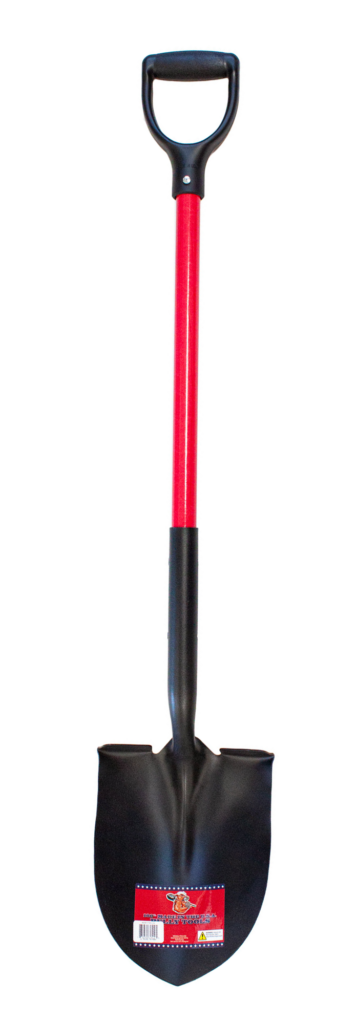
FOR DIGGING
Round-point shovels are designed for digging, lifting, and moving materials like compacted soil, roots, and clay. The shovel head is deeper and has a sharper blade around the edge than the square-shaped shovel so that it can pierce the ground when pushed into the ground by the user. A round-point shovel is essential for at-home and professional landscapers, contractors, and farmers.
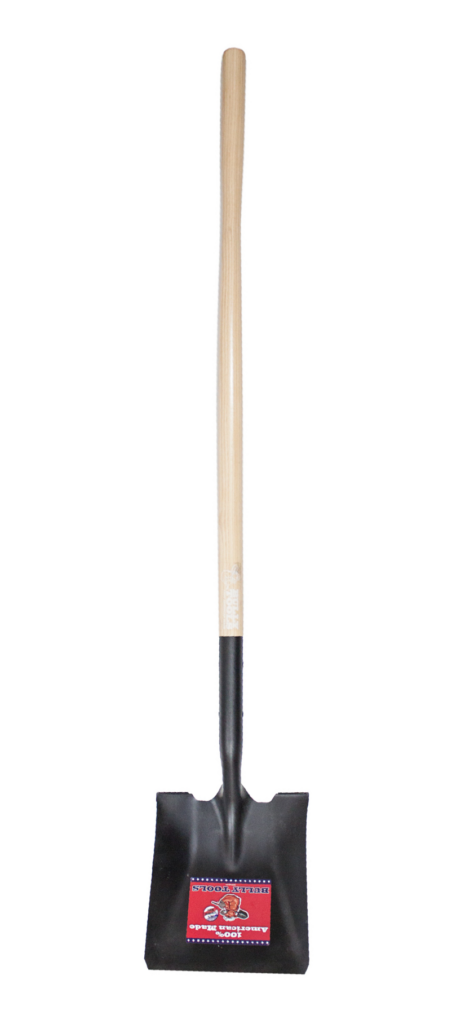
FOR TRANSFERRING
Square-shaped shovels are ideal for transporting large amounts of loose material like gravel, sand, loose soil, and crushed brick. They are shallower – and therefore lighter – than scoop shovels to ensure smoother and more comfortable usage over long periods of time. Square-point shovels are necessary on work sites for transferring material and removing dug out soil and clay.
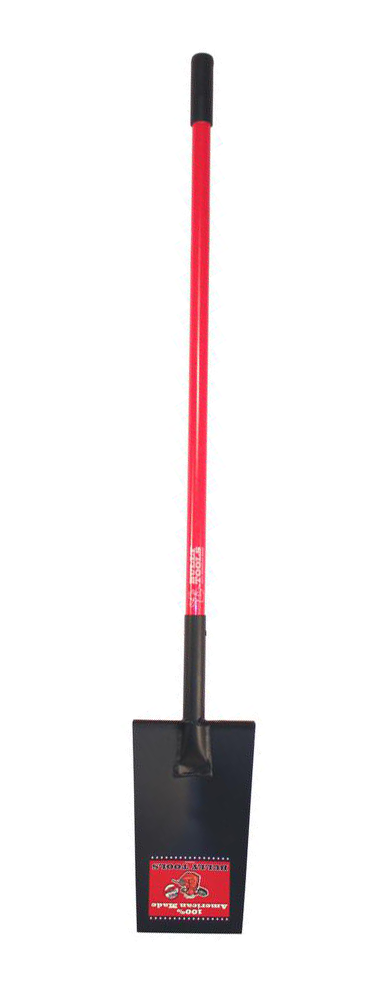
FOR REMOVING SOD
Spades have flat, square-shaped blades and are most useful when cutting and removing sod or transplanting plants or bushes. The blade is sharp enough to cut through all types of soil, plus it’s perfect for creating clean edges along the edge of your lawn.

FOR DIGGING OR CLEARING A TRENCH
Trenching shovels are ideal for a project that involves digging or clearing out trenches. The blade is long and narrow which also makes it useful for clearing post holes and for breaking apart stubborn roots. At the very edge of the blade, the steel is crimped into a point. This enables users to scrape the edges of a trench to form its final dimensions. Trenching shovels let you clear tight spaces without fear of digging too deep – a possible issue if you try to use a round or square point.
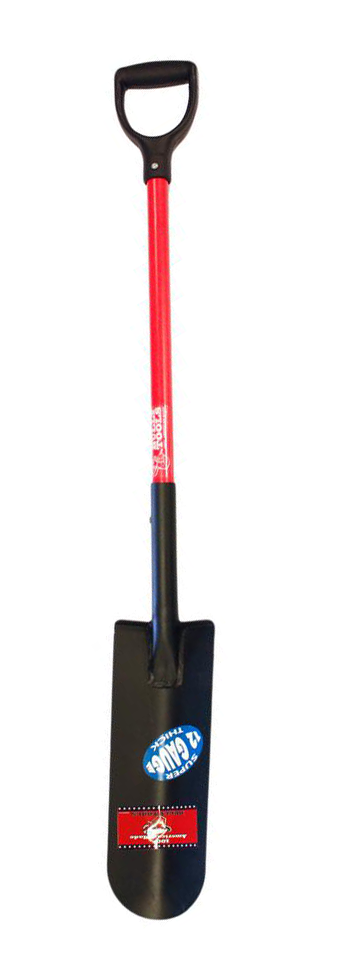
FOR TRANSPLANTING
Drain spades, also known as tile or transplanting spades, are the best tool to use when digging and transplanting live plants or when uprooting saplings. They are similar to trenching shovels in shape and size but have a rounded tip instead of a pointed one. Their size also makes them helpful for clearing trenches.
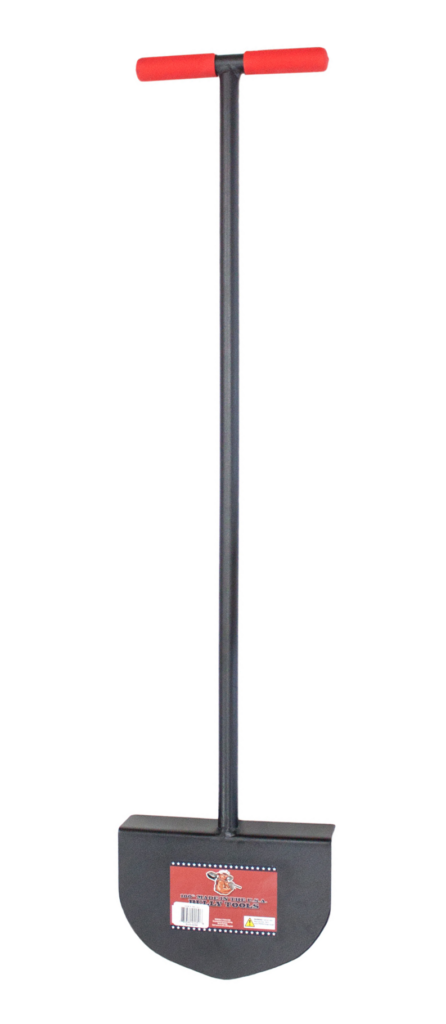
FOR EDGING YOUR LAWN AND SIDEWALKS
An edger, also called an edging shovel, helps to add a neatly cut edge to your lawn. This tool features a half-moon-shaped shovel head with a sharp, extra-wide cutting edge. It typically comes with a long handle that makes it easy to slice through the ground and leaves a clean, crisp edge.
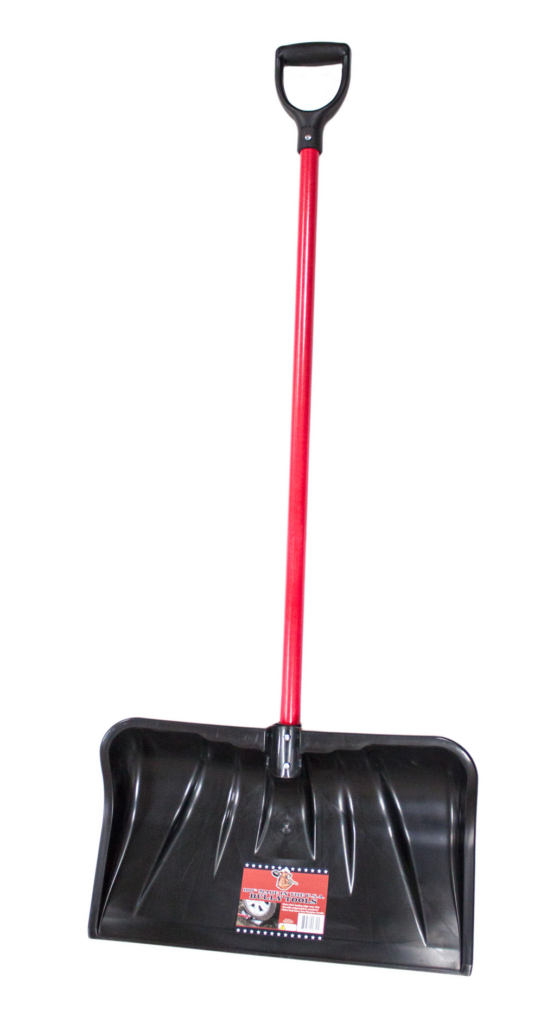
FOR CLEARING SNOW
Snow shovels are designed to be lightweight and durable to help you remove heavy winter snow. Snow shovels are designed to scoop snow off of your sidewalks and outdoor steps. However, the snow shovel’s close relative – the snow pusher – is better to use for big jobs like clearing driveways.
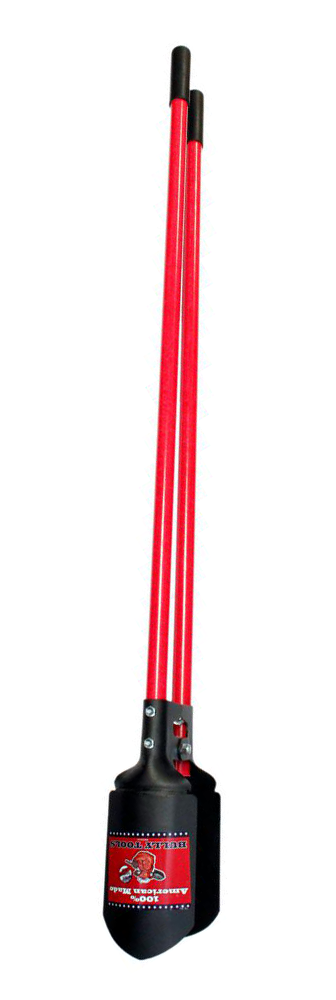
FOR DIGGING POST HOLES
Post hole diggers allow you to dig holes for poles, fencing, and decks easily and precisely. Post hole diggers have two curved, steel blades attached to two poles. The curve allows users to create a relatively circular cut in the ground, which you can then fill in with a post, stones, and concrete.
FOR SCOOPING
These Poly Scoop Shovels are two of our most popular products! They are both constructed of copolymer polypropylene making them lightweight and practically indestructible. Both have a thick scraping edge that won’t scratch your porch or deck flooring or concrete, and their deep scoop capacity allows users to move rocks, mulch, grain, snow, feed, and other loose materials. Our One-Piece Poly Scoop (shown on the left) and the head to our Snow/ Mulch Scoop Shovel are both constructed using our injection molding machine. To make these, we load tiny pellets of plastic into an injection molding machine. As the machine heats, it pushes the pellets into the mold form and melts them into one solid piece of high-quality, durable plastic.
So, now that you have all of the information that you need to make an informed decision while shovel shopping – the next step: buy! Local hardware stores all over the U.S. carry our products, but you could get your own array of 100% Made in the USA Bully Tools shovels and anything else you need to complete your landscaping or home improvement projects on our website! Shop our selection of Lawn and Garden, Snow and Ice Removal, and Speciality tools here.


